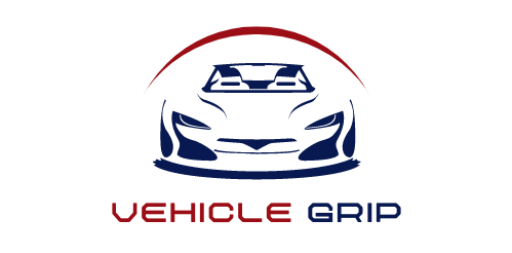A deflationary spiral occurs when prices fall, leading consumers to delay purchases in anticipation of further reductions. This behavior reduces demand, which, in turn, pressures suppliers to cut prices even more, creating a self-reinforcing cycle. Over time, this can slow economic growth and lead to significant industry-wide challenges.
In the auto industry, the deflationary spiral is evident as consumers hold off on buying cars, waiting for better deals. This hesitance drives down prices, increases unsold inventory, and forces automakers to adjust pricing strategies to clear stock. As more consumers anticipate even lower prices, the cycle deepens, making it harder for the industry to stabilize.
Here are five reasons why the auto industry is currently caught in a deflationary spiral.
High Interest Rates
The auto industry faces a significant challenge due to rising interest rates, ranging from 7.64% for a 60-month new car to 8.11% for a 36-month used car. These rates discourage consumers from purchasing cars as financing becomes more expensive. When buyers need to borrow money for a vehicle, the high interest cost makes monthly payments less affordable, prompting many to delay their decision.
As shoppers hesitate, they may look for other financing solutions, including credit cards. However, car loan interest rates leave many consumers exploring alternatives like the best credit cards for cash advance. Although these cards offer quick access to cash, they often come with high fees and interest rates, which may not necessarily solve the problem.
The result is that consumers remain stuck in a difficult position, waiting for rates to improve. This hesitance reduces overall market demand, contributing to the broader deflationary spiral. Automakers are left grappling with growing inventories as consumers hold off on purchasing, waiting for a more favorable economic environment.
Price Volatility
Price volatility in the automotive industry has led consumers to delay their purchases. After seeing prices rise during the pandemic and then fall as supply chains normalized, many buyers are unsure when to commit to a new vehicle. For example, according to Cox Automotive, the average price of a car this year was $47,870, which is 4.3% lower than the previous year’s peak of $49,929. However, shoppers are still hesitant, anticipating further price drops.
This uncertainty keeps many buyers on the sidelines. They expect they’ll secure a better deal if they wait a little longer. The problem is that this delay in purchases puts additional pressure on automakers, who need to move inventory to maintain cash flow. When too many people wait for the “right” price, stock builds up, leading to even more price reductions.
As prices continue to fluctuate, it perpetuates a cycle of uncertainty. Consumers keep holding off, and automakers are forced to adjust pricing strategies even further to entice sales. This behavior directly contributes to the deflationary spiral as the market struggles to stabilize amid these constantly shifting price points.
Growing Inventory
A major factor contributing to the deflationary spiral in the auto industry is the growing inventory of unsold vehicles. As consumer demand weakens, more cars sit on dealership lots, putting pressure on automakers and dealers alike. The increase in available stock means that automakers must reduce prices to clear inventory, which, in turn, further devalues vehicles.
This growing inventory isn’t just an issue of supply. It also affects the broader perception of value. When buyers see large amounts of unsold cars, they assume prices will drop even more, reinforcing the cycle. The industry’s response to this inventory glut is to offer more aggressive discounts and promotions, but these strategies often come at the expense of profit margins.
Holding on to too much inventory is costly for automakers. Storage, depreciation, and the need for quick turnover can strain their finances. As they scramble to clear stock, prices drop, and the deflationary spiral deepens, trapping sellers and buyers in a loop of uncertainty and hesitation.
Consumer Expectations
Consumer expectations are also critical in the deflationary spiral plaguing the auto industry. After years of price fluctuations and economic uncertainty, buyers have become accustomed to waiting for better deals. Even as car prices begin to fall, many consumers believe holding off on purchases will eventually lead to more significant discounts soon.
This mindset has created a kind of buyer decision paralysis, where consumers are no longer motivated to make immediate decisions. With high interest rates and growing inventory, many shoppers can afford to wait until prices drop further. The problem is that this mass hesitation puts downward pressure on prices, which leads to even more consumers adopting the same strategy.
As more people delay purchases, the spiral continues. The longer this cycle persists, the harder it becomes for the industry to recover. Automakers find themselves in a position where they must continuously lower prices to trigger demand, but this only fuels further consumer expectations of future price reductions.
Shift Toward Affordable Models
The growing shift toward more affordable models is another reason the auto industry is caught in a deflationary spiral. Many consumers are opting for cheaper vehicles as they grapple with economic uncertainty and high financing costs.
This shift in demand puts downward pressure on the overall average price of vehicles. Automakers must focus on producing and selling lower-priced models to meet consumer demand, but this comes with challenges. Cheaper cars generally yield lower profit margins, meaning automakers must sell more units to maintain profitability.
The focus on affordability also exacerbates the deflationary spiral. As the market tilts toward cheaper options, the average price drops, fueling consumer expectations of further price declines. The cycle persists as buyers wait for even better deals, which forces automakers to adjust their strategies to keep up with changing demand.
Final Thoughts
The auto industry faces a deflationary spiral driven by several factors: high interest rates, price volatility, growing inventories, shifting consumer expectations, and increased demand for cheaper models. Until these challenges stabilize, both consumers and automakers will remain trapped in this cycle of uncertainty.



